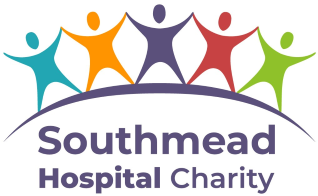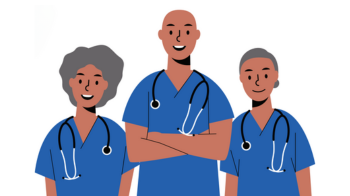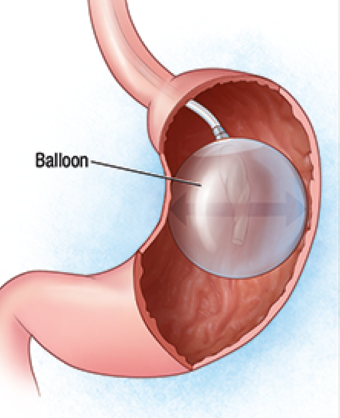Bone marrow test
This information is for patients having a bone marrow test at North Bristol NHS Trust.
What is a bone marrow test?
It has been recommended that you have a bone marrow sample taken. There are two types of samples which can be taken from the bone marrow. You may be asked to have one or both together:
- A bone marrow aspirate: this means taking a liquid sample of bone marrow by inserting a needle through the bone under local anaesthetic (to numb the area) and sucking a small amount of marrow into a syringe.
- A bone marrow trephine (or core biopsy): this involves using a wider, hollow needle, which is rotated into the bone to take a tiny core.
Why is a bone marrow test being performed?
The bone marrow is the place where the blood cells are produced. The main reason for looking at the bone marrow is to find the cause of an abnormality in the blood, for example anaemia, a low white blood cell count, or any other disorder affecting the blood.
In patients with certain types of cancer and other haematological (blood) conditions it is important to know whether there is any evidence of marrow involvement as this may affect the treatment given.
The reason for taking a trephine is that it provides a larger sample of bone marrow and increases the chance of diagnosing certain disorders. A bone marrow sample can provide additional information to results from a blood test.
Medications
It is important to tell the doctor or nurse about any tablets or injections you are taking before you attend for your bone marrow test, as they may have to be stopped for a short while before having the test. This is especially important for medications that thin your blood, for example warfarin, apixaban, rivaroxaban, edoxaban, dabigatran or heparin/enoxaparin. We also need to know about any allergies you may have.
Preparing for the test
The procedure takes about 15-30 minutes, and you should feel well enough to go home after a short rest.
You should allow around an hour for this appointment. There are no special preparations, but it is sensible to have something to eat and drink beforehand or you may feel light- headed during the procedure. We recommended you ask a family member or friend to come with you and take you home afterwards. We advise you don’t drive home if possible.
You will be asked to sign a consent form and will have the opportunity to ask questions beforehand. The procedure is done under local anaesthetic by a doctor or clinical nurse specialist. In some cases, nitrous oxide (gas and air), an inhaled painkiller, can be used. It is safe and it wears off quickly. Please ask if you would like to have this.
Please ask us if you would like more information about pain relief during the procedure. You can phone us on the number in the how to contact us box.
What happens during the test?
The bone marrow exists throughout the body, in the cavities of the bones. The most common place to take a bone marrow is at the back of the pelvis (if you place your hands on your hips, the thumbs will be over the place where the bone marrow is taken). Marrow can also be taken from the breast bone (sternum) but this is unusual.
You will be asked to lie on your side with your knees tucked up. The doctor/nurse will first examine you carefully to choose the most suitable site. Then the skin will be cleaned using an antiseptic fluid. Local anaesthetic will be used to numb the skin and the surface of the bone.
The needle is then pushed through the skin and the outer surface of the bone until it reaches the bone marrow. You may feel some pressure as the needle is pushed into the bone. A syringe is then attached to the needle and a small sample of bone marrow is sucked out into the syringe. This produces an uncomfortable sensation, which may shoot down your leg. This only lasts a few seconds. The needle is then withdrawn, and pressure applied to prevent bruising.
If you need to have a trephine sample as well as an aspirate this will be done under the same local anaesthetic. You will again feel pressure and pushing as a new needle is rotated into the bone. You may feel a dull ache as the core is removed. Again, this might travel down your leg.
Once the procedure is complete, pressure is applied to the area to stop any bleeding and a dressing is applied to the area.
After the test
You will be asked to lie down and rest for a short time after the procedure to make sure there is no excessive bleeding.
You may have some discomfort and bruising over the test site for a few days which can be eased with paracetamol. The dressing should be left in place for at least 24 hours while a scab forms. You are advised to keep the site covered for a further 2 or 3 days.
Possible complications of bone marrow aspiration and trephine
As with all medical procedures, there is an extremely rare chance that a problem may occur. These can include:
- Bleeding: in a small number of cases there is some bleeding from the biopsy site. This usually stops by itself. Very rarely the bleeding is more severe and may require a blood transfusion. If you are taking blood thinners, please inform us before attending for your bone marrow.
- Infection: there is a very small risk that the small wound may become infected. Please contact us if you are concerned.
- Allergy: rarely you may have an allergic reaction to the anaesthetic, cleaning solution, or dressing.
- Damage to nearby structures: rarely the needle damages other nearby structures (for example nerves and muscles).
- Insufficient sample: occasionally, it may be necessary to repeat the procedure if the sample is not of suitable quality for testing in the laboratory.
- Pain: pain should be well controlled after the procedure with simple paracetamol. Please refer to the Post Bone Marrow information if this is not the case.
What will happen if I do not want to have this test?
It would be difficult for your doctor to make the right diagnosis and decide on the correct treatment for your problem.
When/how will I receive the results of the test?
The laboratory tests can take two to three weeks to complete, depending on the information required. Your doctor will discuss with you when and how you will receive your results.
Where does the test happen?
You will be asked to attend the Medical Day Care Unit at Gate 5b (Room 28) Southmead Hospital for your test.
How to contact us
Medical day care schedulers
0117 414 3206
0117 414 3205
09:00 - 16:00
Clinical Nurse Specialist
07545 421 893
This number has an out of hours answer machine. We will get back to you within one working day.
© North Bristol NHS Trust. This edition published September 2024. Review due September 2027. NBT002270
Support your local hospital charity

See the impact we make across our hospitals and how you can be a part of it.


